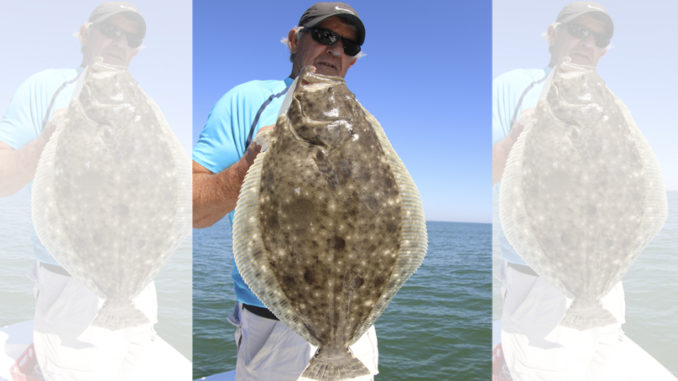
Resident fish wake up, migratory fish move in, making for great flatfish action
Mixed in with all of the bikers and the beach-therapy seeking tourists visiting the Grand Strand this month are anglers looking to score a 10-fish limit of flounder. That’s because the waters on either end of the long beach are firing off as fish pile into the estuaries with empty stomachs.
As water temperatures rise in spring, the cat-and-mouse game begins with an influx of bait and predators. Early on, when the bait first arrives, it’s not much of a challenge for flounder, which will become aggressive and will pounce on baits in a flash.
In the waters around Murrells Inlet, S.C., Jason Burton of Fly Girl Fishing Charters will flounder dialed in. He encourages anglers to get on the water in May because the flounder bite takes off, and they can catch fish all over.
“As the waters warm up in spring, the resident flounder come out of dormancy, and an entire other group arrive in from the ocean — and both are looking to eat,” said Burton (843-421-2870). “The mullet start showing up in May, and the flounder get aggressive. That makes them easier to catch.”
Burton will fish a wide range of places to boat double-digit catches because the fish can be scattered in small groups all over the Murrells Inlet estuary.
Flounder move around a lot this time of year
“We find them everywhere from the jetties to all over the inlet in both deep and shallow places. They move around a lot more and will set up in place to ambush passing bait,” he said.
Flounder look for places that offer them an opportunity to ambush passing baitfish and shrimp. These spots include anything from an oyster bar, sand bar, grassline or just a small, abrupt change in the bottom contour.
“Fish anything different that will provide an ambush opportunity. Anything that sticks out can hold flounder and should never be missed,” said Burton. He targets creek mouths, deep holes adjacent to oyster bars, and mud banks with sharp dropoffs. But he will often head to the jetties in the morning and never leave.
“The jetties heat up in May because the bigger, migratory flounder are moving into the inlet along with the big groups of mullet. You can always count on a strong bite at the jetties,” he said.
Stand-up jigheads keep your hook off the bottom
Flounder will eat about any type of fish they can get in their mouth. But with an abundance of finger-sized mullet arriving, small minnows are by far the best bait option. Burton uses finger mullet and mud minnows, primarily on stand-up jigheads.
“I like to use stand-up jigheads so you don’t get hung up on the bottom,” said Burton, who uses the lightest jighead he can get away with — in most cases ¼-ounce. But he will go as heavy as ¾-ounce in deeper water with heavy current.
“I like to use light jigheads because you want just enough weight to feel the bottom and allow the current to roll the minnow along the bottom,” he said.
Steadily rising water temperatures make the fishing better each day as May progresses.


Be the first to comment